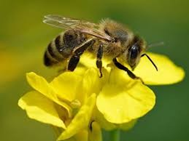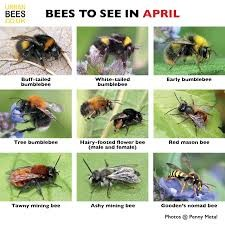
Some Parishioners do prefer to see neatly mown grass on the
verges and green areas of Burwell.
However, in recent years, more and more local people are calling for the
Parish Council to allow green areas to grow and flower, producing a source of
food for our bees and other pollinators, and acting as a carbon sink (see
below).
Our wildflowers pilot scheme in 2021 was met with a lot of approval, and the Council had a lot of positive feedback about the buttercups on Pound Hill. This year an area is being left uncut again on Pound Hill to encourage biodiversity and wildlife.
The benefits to the bees and other pollinating insects is obvious, but by allowing plants and grasses to grow, this area is also providing a carbon sink. See below for further information on grasslands as carbon sinks

About the decline of pollinators
https://www.rhs.org.uk/wildlife/pollinators-decline-in-numbers
https://ento.psu.edu/research/centers/pollinators/resources-and-outreach/disappearing-pollinators
https://www.europarl.europa.eu/news/en/headlines/society/20191129STO67758/what-s-behind-the-decline-in-bees-and-other-pollinators-infographic
GRASSLANDS AS CARBON SINKS
While the principal reason for much less frequent mowing of roadside verges and other areas of grassland is to enhance biodiversity at a time when nature is under threat, grasslands also act as carbon sinks by storing carbohydrates formed from atmospheric carbon dioxide by photosynthesis. There are three main storage routes.
PLANT STRUCTURE
Plants store the carbohydrate products, sugars, and starches, formed from photosynthesis, in leaves, stems, roots, seeds and fruits. Broad-leaved grassland plants like dandelions have tap roots to store carbohydrate underground. Less frequent mowing should allow plants with tap roots to store more carbohydrate in their roots because their leaves have a chance to grow and capture more carbon dioxide than if the grassland was mown frequently
SOIL BACTERIA AND PLANT SPECIES OF THE PEA FAMILY
Plant species of the pea family obtain the essential nutrient of nitrogen in exchange for carbon through a symbiotic relationship with rhizobia bacteria. Rhizobia can convert nitrogen gas in the air and in spaces between grains of soil into ammonium, a form in which nitrogen can be absorbed as a nutrient by plant species of the pea family. Rhizobia attach to the roots of the plants, forming colonies in the shape of nodules. In exchange for ammonium rhizobia absorb carbohydrates from plant roots, thus fixing carbon in the soil.
Two species of the pea family, white clover and black medick, are abundant locally in grassland. Two other species of the pea family, red clover and birdsfoot trefoil, are common in local grasslands.
PLANTS AND FUNGAL MYCORRHIZZA
Most plant species that are herbaceous perennials also form symbiotic relationships with fungal mycorrhiza. Plant roots link with underground mycorrhiza systems. The mycorrhiza provides plants with essential nutrients, including nitrogen and phosphates, in exchange for carbohydrate from plant roots, thus fixing carbon in the soil. Mycorrhizal systems allow plants to forage for essential soil nutrients over a wider area than their root areas. This can be important for the absorption of phosphate, which can be in short supply in some soils.
CONCLUSION
These are three ways in which grasslands act as carbon sinks. Some of the carbohydrate in the soil will be used by soil organisms, converted back to carbon dioxide, and stored in the soil.
References
J H Langenheim and K V Thimann ; Botany
R G S Bidwell ; Plant Physiology
Brian Spooner & Peter Roberts ; Fungi
Penguin Dictionary of Botany
Plantlife website